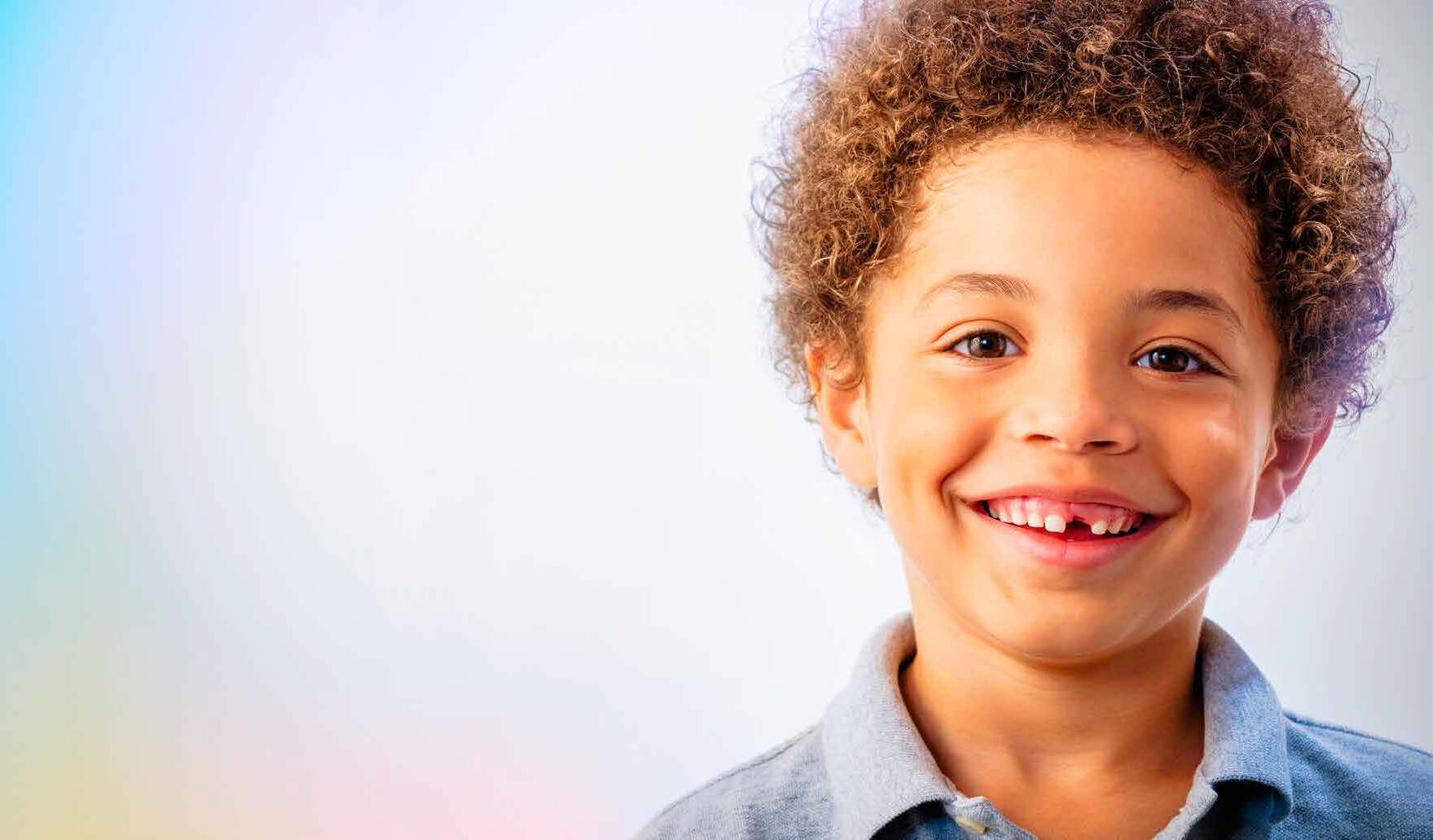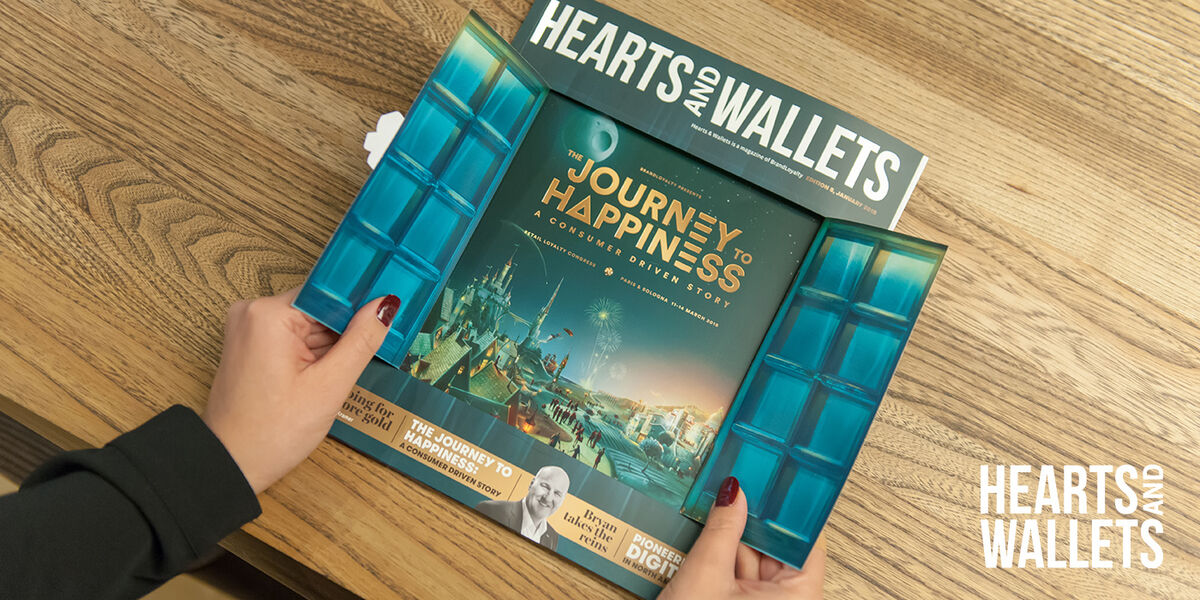
The CEO of LoyaltyOne has spent the last 25 years in the industry, and never shys away from the next loyalty challenge. During his time as CEO of BrandLoyalty Hearts & Wallets caught up with him to find out more about the man behind loyalty.

Language, customs, culture, appearance, ethnicity, climate, borders and many more factors define different countries across the world, but the smile of a child means the same thing on a global scale: “I’m happy”. And that’s the purpose of our kids’ promotions.
The smile on children’s faces when they receive their free gift at the checkout is the most important effect of our campaigns, and it’s reflected by the smiles on their parents’ faces. That’s why promotions targeted at kids are becoming an important retail and social currency all over the world. Miranda Evans, Head of ILP at BrandLoyalty, explains how they work.
Be an innovator, not an imitator
Kids’ programmes are still quite new to many regions, so sometimes retailers want other supermarkets to take the initiative first. But actually, kids’ programmes are a proven concept on a global scale. Last year, when Pick n Pay decided to be the first supermarket in South Africa to run a kids’ programme(using Stikeez as rewards), the programme turned into a nationwide hype almost overnight. Since then other retailers have also embraced the idea of running similar types of campaigns, and these have become an accepted marketing tool. Our research has shown that kids’ programme pioneers enjoy ‘first-mover advantage’ when shoppers have never been offered instant rewards before; the effects of the very first campaign in a country are hardly ever matched. And shoppers are surprised, delighted and grateful. It’s a unique proposition.
Pleasing the next generation of shoppers
I love being involved with kids’ programmes, because they work on so many levels. They add a fun element to supermarket shopping. They let parents reward their children for being good when getting the groceries, and offer grandparents the opportunity to give their grandchildren an extra gift from time to time.
They show consumers that the retailer appreciates their custom. Most of all, they demonstrate to children that the supermarket recognises and values them. Children are the shoppers of the future. They develop brand preferences at an increasingly young age. And a relatively small gesture is all it takes to make them smile.
An investment today pays dividends tomorrow
Kids’ programmes are short-term loyalty programmes during which customers are offered one or more small gifts, depending on what they have just spent at the checkout. Often, these gifts are highly appealing to children and offer a certain element of education or so-called playability. We’ve run programmes in more than 40 unique countries for over a decade now, and we’ve seen the same positive effect on retail turnover, not just during the programme but afterwards too. Kids’ programmes are an amazingly effective way to create goodwill towards the retailer, and this emotional connection lasts way beyond the promotion itself.
Something for everyone
These kind of programmes require trust and an important financial commitment from the retailer, but also leads to a high ROI and lots of new customers. In contract to regular loyalty programmes, which involve collecting stamps over a longer period, a kids’ programme offers an instant reward to all customer who spend a certain amount in the supermarket.
It draws new customers into the store, enabling them to become familiar with shopping there. Also, it attracts a very wide target group, from households with children to young or elderly adults: funnily enough, it’s the grandparents who are the second most important group of collectors. This means that participation rates and opportunities for customer acquisition are higher than with regular loyalty programmes. As kids’ programmes are aimed at children, this encourages friends and family members to shop at a particular supermarket to collect free gifts for children they know. These kind of programmes also enable the cashiers to have a rewarding interaction with customers, because it’s nice to be able to hand over a free gift. Running a kids’ programme creates a ‘feel-good’ experience for everyone.
In countries where ‘instant loyalty promotions’ such as these are less well known, retailers sometimes ask us why they should switch from running their regular loyalty programmes to doing a kids’ programme. Actually, both serve a different purpose and can even run simultaneously, so there’s no need to choose between them.
Kids’ programmes create new impulses, differentiate one retailer from another, and get that all-important new footfall through your stores in a higher frequency. They make it possible to ‘wow’ customers with impressive concepts, and generate a real buzz among children, who want to complete their collection and swap items with their friends. As programmes are usually run for somewhere between 4 and 8 weeks, they act as a ‘short and sharp’ marketing tool that lets retailers capitalise on events such as an important football tournament, a new film release, seasonal changes, anniversaries, or other time-specific activities.
Let’s talk money
It’s relatively easy to involve vendors, whereas FMCG suppliers would rather not give discounts on their products. With a kids’ programme, the price perception of each product stays intact, while enabling retailers to give their customers a little extra. And the potential ROI of a kids’ programme is much higher compared to a regular price-off. These kind of programmes are also very flexible in creative and branding terms: if a retailer wants to influence the price perception of their customers, we can tailor the promotion to achieve this goal.
Actually, it’s a gift!
The concept of a kids’ programme isn’t that well known in some countries or even continents, such as in South America. It always amuses me when I’m asked why we don’t just sell the toys, rather than giving them away. The whole point of a kids’ programme is that it lets a retailer express their appreciation by providing customers with a free gift.
Kids’ programmes worldwide
It’s fascinating to see the different attitudes to kids’ programmes in different countries – these are often a reflection of the local culture. For instance, Japanese and other Asian clients are really careful and practical. They like to focus on nurturing loyal customers and have great respect for the elderly. Hierarchical structures are respected, and the attitude to children couldn’t be more opposed to that in the US. A programme that works well in the North American market needs to be rethought for Asia, where the mother is much more of an authority figure. In Australia and New Zealand, kids’ programmes are more well known as they’ve been around for longer. So today’s programmes need to have a strong licence and a bespoke concept, instead of being an off-the-shelf programme.
In Indonesia, functional items go down well, such as figurines with highlighter pens. Europe is a mixed market due to the high number of different countries with more mature markets, whose shoppers are interested in having fun – they enjoy being invited to special events involving Star Wars figures, and create a tremendous amount of ‘word of mouth’ around the promotion. They tell their family and friends all about it, encouraging them to join in and collect too. Just imagine the PR value of all those posts on social media! At that point, a kids’ programme really takes on a life of its own – customers get so enthusiastic about it that the excitement goes viral.
Making the most of media
Often, the most expensive communication tools such as radio and TV slots are already bought in advance. So, if a retailer is interested in running a kids’ programme, it’s simply a matter of reallocating these slots to support their programme in a way that makes sense. The TV commercials could then be used to reach consumers who do not yet do their shopping in that store, rather than to encourage the existing consumer base to spend more. Social media offers a low-cost way to get the conversation going, and we’ve found that people love telling their friends about a new promotion. With this channel we target parents, and they quickly involve their children. It’s just a question of getting the ball rolling. What’s important to keep in mind, is that kids are the same worldwide, and who doesn’t want to make them happy? Retailers can easily keep these potential future shoppers satisfied - with a small gesture of a gift at the checkout - and they will get a priceless gift in return: a smile.
Hearts & Wallets is the official magazine of BrandLoyalty. It is a magazine for people working at the highest levels of the food retail industry. The goal of Hearts & Wallets is to come up with real insights on - and answers to - current issues, while offering its own individual interpretation as food for thought.
Read more articles from Hearts & Wallets
Read more in depth articles about the food and loyalty industries from previous editions of Hearts & Wallets magazine.
Go to overview
Want to receive Hearts & Wallets?
Hearts & Wallets is available to you digitally or in print, to add your name to the distribution list contact us below.
Request Hearts & Wallets